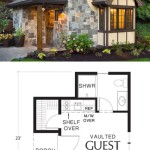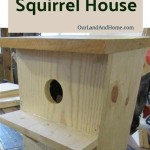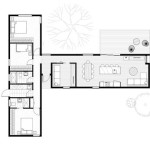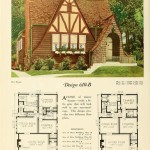Hen house plans are detailed blueprints or schematics that provide a comprehensive guide for constructing a structure specifically designed to house and care for chickens. These plans typically include specifications for the size, shape, materials, and layout of the hen house, ensuring optimal living conditions for the birds and maximizing egg production.
Whether you’re a seasoned chicken keeper or a novice enthusiast, having a well-planned hen house is crucial for the health and well-being of your flock. A well-designed hen house provides protection from predators, harsh weather conditions, and diseases while promoting good ventilation and ample space for the chickens to move around, nest, and roost.
In the following sections, we will delve into the various aspects of hen house plans, exploring the different types available, the essential features to consider, and the benefits of using pre-designed plans versus creating your own. We’ll also provide tips and resources to help you choose the ideal plan for your specific needs and guide you through the construction process to ensure a successful and rewarding chicken-keeping experience.
When designing a hen house, there are several key points to consider to ensure the health, safety, and productivity of your flock. Here are 9 important aspects to keep in mind:
- Ventilation
- Predator protection
- Nest box size
- Roosts
- Lighting
- Space
- Materials
- Drainage
- Ease of cleaning
By carefully considering these factors and incorporating them into your hen house plans, you can create a comfortable and functional living environment for your chickens, maximizing their well-being and egg production.
Ventilation
Proper ventilation is crucial in hen house plans to maintain a healthy environment for your chickens. Inadequate ventilation can lead to a buildup of harmful gases, such as ammonia and carbon dioxide, which can cause respiratory problems and other health issues in your flock.
To ensure proper ventilation, incorporate the following into your hen house plans:
- Windows: Install windows on opposite sides of the hen house to create cross-ventilation, allowing fresh air to enter and stale air to escape.
- Vents: Install vents near the top of the hen house walls to allow warm, moist air to escape, preventing condensation and respiratory problems.
- Fans: In warmer climates or during hot summer months, consider installing fans to circulate air and provide additional ventilation.
The size and number of windows and vents will depend on the size of your hen house and the number of chickens you plan to keep. As a general guideline, provide at least one square foot of ventilation for every four chickens.
It’s important to strike a balance between ventilation and insulation. While proper ventilation is essential, you don’t want to create drafts that can make your chickens uncomfortable or increase their risk of respiratory problems. Consider using insulated windows and vents to maintain a comfortable temperature inside the hen house while allowing for adequate ventilation.
Predator protection
Protecting your chickens from predators is a top priority when designing hen house plans. Predators such as foxes, raccoons, and hawks pose a significant threat to your flock, and it’s crucial to take the necessary precautions to keep them safe.
Here are several key considerations for predator protection in hen house plans:
- Location: Choose a location for your hen house that is away from potential predator hiding spots, such as dense vegetation or wooded areas. Consider placing the hen house in a secure and visible area of your property.
- Sturdy construction: The hen house should be constructed using strong and durable materials, such as wood, metal, or concrete blocks. Ensure that all gaps and holes are sealed to prevent predators from entering.
- Hardware cloth: Cover all windows and vents with hardware cloth, a strong wire mesh that prevents predators from reaching inside the hen house.
- Motion-activated lights: Install motion-activated lights around the hen house to deter predators at night. These lights can startle predators and make them less likely to approach.
In addition to these measures, consider the following:
- Secure run: If possible, provide your chickens with a secure outdoor run where they can exercise and forage during the day. The run should be enclosed with hardware cloth or another sturdy material to prevent predators from digging under or climbing over.
- Predator-resistant fencing: Surround your entire property with predator-resistant fencing, such as welded wire mesh or chain-link fencing. This will help to keep predators out of your yard and away from your chickens.
- Guard animals: Consider getting a guard dog or other livestock guardian animal to protect your chickens from predators. These animals can be effective deterrents and can help to keep your flock safe.
By incorporating these predator protection measures into your hen house plans, you can create a safe and secure environment for your chickens, reducing the risk of attacks and ensuring their well-being.
Nest box size
Nest box size is an important consideration in hen house plans as it affects the comfort, productivity, and health of your chickens. Providing the right size nest box will encourage your hens to lay their eggs in designated areas, reducing the risk of breakage and contamination.
- Dimensions: The ideal nest box size for most breeds of chickens is 12 inches wide, 12 inches deep, and 12 inches high. This provides enough space for the hen to enter, turn around, and nest comfortably.
- Number of nests: The number of nest boxes you need will depend on the size of your flock. As a general rule, provide one nest box for every four to five hens. This will help to prevent overcrowding and ensure that all hens have a place to lay their eggs.
- Privacy: Hens prefer to lay their eggs in private, secluded areas. Design your nest boxes to provide privacy by placing them in a quiet corner of the hen house and providing a solid barrier or curtain at the entrance.
- Ventilation: Nest boxes should have adequate ventilation to prevent moisture buildup and respiratory problems in your hens. Consider adding small ventilation holes near the top of the nest box or using hardware cloth for the front panel to allow for air circulation.
By providing the right size and number of nest boxes, you can encourage your hens to lay their eggs in designated areas, improve egg quality, and promote the overall health and well-being of your flock.
Roosts
Roosts are essential elements of hen house plans, providing elevated perches for your chickens to sleep and rest. Properly designed roosts promote good health, comfort, and overall well-being for your flock.
- Height and spacing: Roosts should be placed at a height that allows your chickens to jump up and down comfortably. The optimal height is typically around 18 to 24 inches from the floor. Provide enough horizontal space on the roosts so that each chicken has at least 8 to 10 inches of space to perch.
- Material: Choose a material for your roosts that is comfortable for your chickens to stand on. Round or oval roosts are preferable to square or sharp-edged roosts, as they prevent pressure sores on your chickens’ feet. Common materials used for roosts include wood dowels, bamboo poles, or plastic-coated wire.
- Ventilation: Ensure that your hen house has adequate ventilation to prevent moisture buildup around the roosts. Poor ventilation can lead to respiratory problems in your chickens.
- Location: Place the roosts in a quiet and draft-free area of the hen house. Avoid placing roosts near windows or doors, as drafts can make your chickens uncomfortable and increase their risk of respiratory problems.
By providing well-designed roosts in your hen house plans, you can ensure that your chickens have comfortable and healthy places to rest and sleep, promoting their overall well-being and productivity.
Lighting
Lighting plays a crucial role in hen house plans, affecting the health, productivity, and overall well-being of your chickens. Proper lighting can stimulate egg production, encourage natural behaviors, and prevent health problems.
- Intensity and duration: The intensity and duration of light in your hen house can significantly impact your chickens’ egg production. Aim for a light intensity of around 15 to 20 lux at bird level and provide 14 to 16 hours of light per day. This lighting schedule mimics natural daylight patterns and stimulates egg production.
- Spectrum: The spectrum of light in your hen house is also important. Chickens are most sensitive to green and blue light, which promotes alertness and activity. Avoid using red light at night, as it can interfere with the chickens’ sleep patterns.
- Natural light: Whenever possible, incorporate natural light into your hen house design. Windows or skylights can provide ample light during the day, reducing the need for artificial lighting.
- Artificial lighting: If natural light is limited, you will need to provide artificial lighting in your hen house. Choose energy-efficient LED or fluorescent lights that emit the appropriate spectrum and intensity of light.
By carefully considering the lighting needs of your chickens and incorporating these principles into your hen house plans, you can create a lighting environment that supports their health, productivity, and well-being.
Space
Providing adequate space in hen house plans is essential for the health, well-being, and productivity of your chickens. Overcrowding can lead to stress, disease, and reduced egg production.
- Floor space: The minimum recommended floor space for chickens is 4 square feet per bird. However, providing more space is always better, as it allows your chickens to move around comfortably and engage in natural behaviors such as scratching, dust bathing, and foraging.
- Headroom: Chickens need enough headroom to stand upright and stretch their wings without hitting the ceiling or other structures. Provide at least 2 feet of headroom throughout the hen house.
- Nesting space: Provide one nest box for every four to five hens. Each nest box should be at least 12 inches wide, 12 inches deep, and 12 inches high.
- Roosting space: Provide at least 8 to 10 inches of roosting space per chicken. Roosts should be placed at a height that allows your chickens to jump up and down comfortably, typically around 18 to 24 inches from the floor.
By carefully considering the space requirements of your chickens and incorporating these principles into your hen house plans, you can create a comfortable and healthy living environment that promotes their well-being and productivity.
Materials
The choice of materials for your hen house will depend on several factors, including the size of your flock, your budget, and the climate in your area. Here are some commonly used materials for hen house construction:
- Wood: Wood is a popular choice for hen house construction due to its durability, affordability, and ease of workability. Cedar, redwood, and pine are all good options for hen houses, as they are naturally resistant to rot and decay.
- Metal: Metal hen houses are durable and easy to clean, but they can be more expensive than wood hen houses. Galvanized steel is a good option for metal hen houses, as it is resistant to rust and corrosion.
- Plastic: Plastic hen houses are lightweight and easy to clean, but they are not as durable as wood or metal hen houses. They are also more susceptible to damage from UV rays and extreme temperatures.
- Concrete blocks: Concrete blocks are a good choice for hen houses in areas with extreme weather conditions. They are durable, fire-resistant, and provide good insulation.
When choosing materials for your hen house, it is important to consider the following factors:
- Durability: The materials you choose should be durable enough to withstand the elements and protect your chickens from predators.
- Ease of cleaning: The materials you choose should be easy to clean and disinfect to maintain a healthy environment for your chickens.
- Cost: The cost of the materials you choose will vary depending on the type of material and the size of your hen house.
By carefully considering the factors above, you can choose the right materials for your hen house that will provide a safe, healthy, and comfortable environment for your chickens.
Drainage
Proper drainage is essential in hen house plans to prevent moisture buildup, which can lead to a variety of health problems for your chickens. A well-drained hen house will help to keep your chickens dry and comfortable, and it will also reduce the risk of disease.
There are several things you can do to ensure proper drainage in your hen house:
- Choose a well-drained location: When choosing a location for your hen house, select an area that is not prone to flooding or water accumulation. Avoid low-lying areas or areas with poor drainage.
- Grade the land: If the land around your hen house is not well-drained, you may need to grade it to create a slope that allows water to drain away from the building. Grading should slope away from the hen house in all directions.
- Install a drainage system: If the land around your hen house is not well-drained, you may need to install a drainage system to remove excess water. A drainage system can consist of gutters, downspouts, and drains.
- Provide a dry area for your chickens: Even if you have a well-drained hen house, it is important to provide a dry area for your chickens to stand or sit. This can be done by placing a layer of gravel or pea gravel on the floor of the hen house.
By following these tips, you can ensure that your hen house has proper drainage, which will help to keep your chickens healthy and comfortable.
Additional tips for drainage:
- Clean gutters and downspouts regularly to prevent clogs.
- Check the drainage system after heavy rains to ensure that it is working properly.
- If you live in an area with heavy rainfall, you may want to consider installing a sump pump to remove excess water from the hen house.
Ease of cleaning
Ease of cleaning is an important consideration in hen house plans. A well-designed hen house will be easy to clean and disinfect, which will help to maintain a healthy environment for your chickens and reduce the risk of disease.
- Smooth surfaces: Choose materials for your hen house that are smooth and easy to clean. Avoid materials that are porous or have rough surfaces, as these can harbor bacteria and parasites.
- Removable parts: Make sure that as many parts of your hen house as possible are removable. This will make it easier to clean and disinfect the hen house thoroughly.
- Adequate space: Provide enough space in your hen house so that you can easily move around and clean all areas. Avoid overcrowding the hen house, as this will make it more difficult to clean.
- Good ventilation: Good ventilation will help to keep the hen house dry and free of dust and debris. This will make it easier to clean and will also help to reduce the risk of respiratory problems in your chickens.
By following these tips, you can design a hen house that is easy to clean and maintain, which will help to keep your chickens healthy and happy.



:max_bytes(150000):strip_icc()/coop-3b5cd1801127408183e726fee2131de0.jpg)





:max_bytes(150000):strip_icc()/free-chicken-coop-plans-1357113_FINAL-c325847e0d34457ab8629c01bd5d9981-5b92d7a6fc7344bca544d6767f15c094.png)
Related Posts








